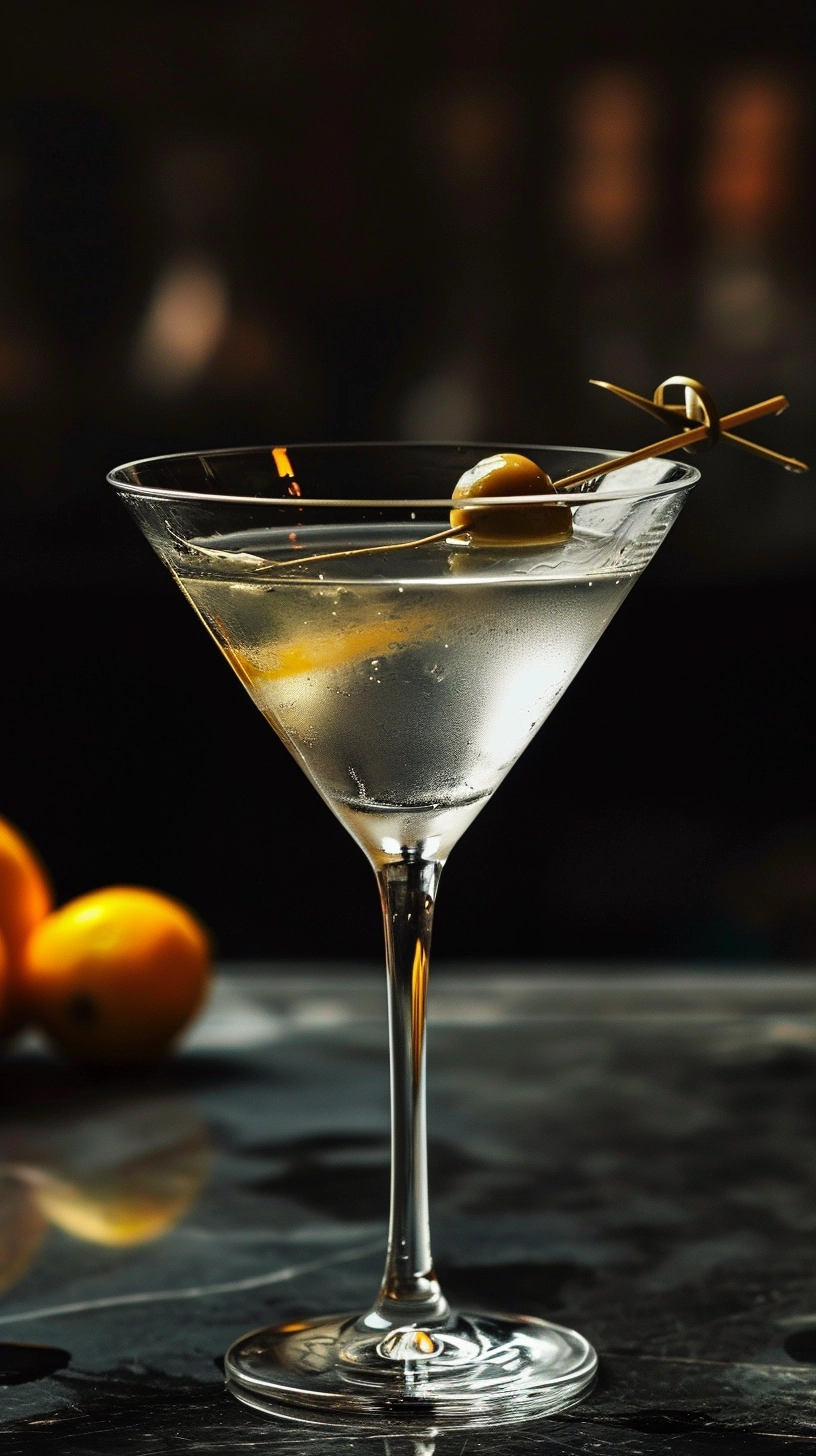
Introduction
The Dry Martini—a symphony of gin, dry vermouth, and a dash of orange bitters—stands as a beacon of sophistication in the world of cocktails. Whether you’re sipping it at a swanky bar or mixing it up at home, the Dry Martini embodies timeless elegance. Let’s explore its origins, the perfect proportions, and the art of crafting this classic libation.
Origins and Evolution
The exact birthplace of the Dry Martini remains shrouded in mystery, much like the allure of a secret society. Was it a California prospector during the 1849 Gold Rush or a New York City hotel barman 50 years later? Regardless, the Martini emerged as bartenders experimented with gin and vermouth. Early recipes leaned toward sweetness, but by the turn of the century, the Dry Martini took its current form—a harmonious blend of dry gin, dry vermouth, and a hint of orange bitters.
Crafting the Perfect Dry Martini
Ingredients:
- 2 1/2 ounces gin
- 1/2 ounce dry vermouth
- 1 dash orange bitters
- Garnish: lemon twist
Instructions:
- Chill Your Glassware:
- Place your martini glass in the freezer about 30 minutes before serving.
- This ensures your Dry Martini stays frosty.
- Mix the Elixir:
- In a mixing glass filled with ice, combine the gin, dry vermouth, and a dash of orange bitters.
- Stir gracefully for at least 20 to 30 seconds until ice cold.
- Strain and Serve:
- Strain the elixir into your pre-chilled martini glass.
- Admire its clarity—no ice shards allowed.
- Garnish with Panache:
- Twist a lemon peel over the Dry Martini, releasing its fragrant oils.
- Drop the twist into the drink.
What Makes a Martini Dry?
The term “dry” in a cocktail signifies a higher proportion of the base spirit (in this case, gin) to the mixer (vermouth). It’s not about omitting vermouth entirely—despite the clichéd refrain of asking bartenders to merely “look at the vermouth.” The Dry Martini strikes the perfect balance, allowing the gin to shine while the vermouth adds subtle complexity.
The Gin-to-Vermouth Ratio
The ideal ratio varies based on personal taste, but common formulas fall within the range of four-to-eight parts gin to one part vermouth. Experiment to find your sweet spot.
Variations and Beyond
Once you’ve mastered the Dry Martini, explore its intriguing relatives:
- Vodka Martini: Swap gin for vodka.
- Reverse Martini: Flip the gin and vermouth ratios.
- Perfect Martini: Equal parts dry and sweet vermouth.
Remember, the Dry Martini isn’t just a drink; it’s an invitation to elegance. So raise your glass, channel your inner James Bond (stirred, not shaken), and savor the timeless allure of this classic cocktail. Cheers!
